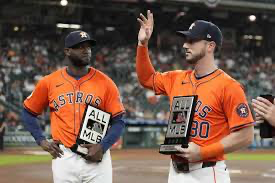Breaking:3 Mets players who proved their spring training was a fluke
Spring training often serves as a precursor to the regular season, but performances during these exhibition games don’t always translate to meaningful success. For the New York Mets, several players have historically shown great promise during spring training only to falter once the regular season began. Here are three notable examples of Mets players for whom a stellar spring training proved to be a fluke:
1. Travis d’Arnaud (2017)
Travis d’Arnaud, a highly-touted catching prospect, displayed a power surge during the 2017 spring training, hitting five home runs and boasting an impressive .333 batting average. This performance raised expectations for d’Arnaud, who had struggled with consistency and injuries in previous seasons. However, once the regular season started, d’Arnaud’s production dropped significantly. He finished the 2017 season with a .244 batting average and 16 home runs—decent numbers for a catcher, but not reflective of his spring training form. His defensive struggles and persistent injuries further highlighted the gap between his spring training promise and regular-season reality.
2. Zack Wheeler (2019)
Zack Wheeler entered the 2019 season with high expectations after a strong finish to the previous year and an impressive spring training. In the spring of 2019, Wheeler posted a 1.32 ERA and appeared poised to join the ranks of elite pitchers. However, his regular-season performance was inconsistent. While he had flashes of brilliance, Wheeler ended the season with a 3.96 ERA and struggled with command issues. His spring training dominance did not fully carry over into the regular season, contributing to the Mets’ inconsistent pitching staff.
3. Brandon Nimmo (2020)
In the abbreviated 2020 spring training, Brandon Nimmo showed exceptional form, hitting .429 with a .500 on-base percentage. Nimmo, known for his plate discipline and ability to get on base, seemed primed for a breakout season. Unfortunately, the regular season did not mirror his spring success. Although he maintained a respectable .280 batting average and .404 on-base percentage, Nimmo’s power numbers and run production were underwhelming. The pandemic-shortened season also meant fewer opportunities to rebound, but it was clear that his spring training numbers were not fully indicative of his regular-season performance.
Conclusion
Spring training serves as a time for players to shake off the rust and for teams to assess talent, but it is not always a reliable indicator of regular-season success. For Travis d’Arnaud, Zack Wheeler, and Brandon Nimmo, their impressive spring performances raised expectations that ultimately went unmet during the regular season. These examples serve as a reminder that while spring training can offer glimpses of potential, it often lacks the pressure and intensity of regular-season play, leading to discrepancies in performance.





